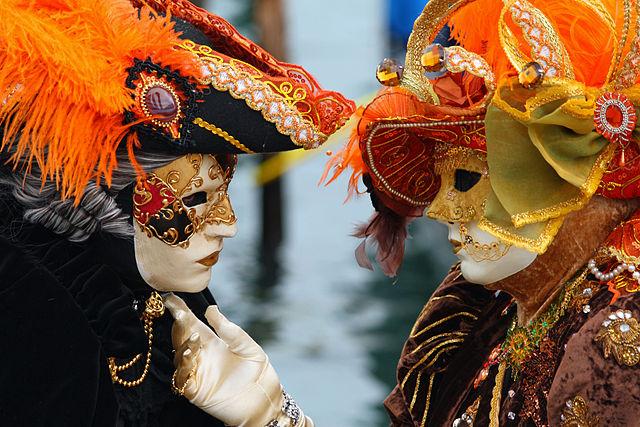Italy’s most famous Carnival may have started as a clever political ploy to keep the populace happy. First recorded in 1094, and made an official holiday in 1296, il Carnevale was an opportunity for people to revel and, at the same time, criticise the ruling classes within the playful constraints of the festival, thus diffusing social tensions.
For six weeks, the daily grind flew out of the window, replaced by dances and jests, musicians and jugglers, performances and parties. The disguise hid class, gender and wealth, contributing to the sense of freedom.
Venice’s Carnival gave the Duke of Mantua the occasion to astonish the common people by parading along the streets with an exotic cortege of Indians, Turkish, Tartars and Africans in the 17th century; it provided the notorious womaniser Giacomo Casanova with the perfect chance to seduce elegant ladies; and it inspired several of Carlo Goldoni’s Commedia dell’Arte pieces.
But, over time, Venice’s political plan backfired, because the revelries spiralled out of control—at least the control authorities were happy with. The local administrators introduced an increasing number of laws limiting what people could do during Carnival—the most amusing of which is the one prohibiting masked people from gambling, as it was all too easy for them to flee their creditors. And when the Venetian Republic fell to Napoleon and then passed into Austrian hands, the new rulers forbade masks altogether.
The revels survived on the smaller islands of the Venetian lagoon, but were lost in the city. Until the second half of the 20th century, that is, when residents’ associations brought Carnival back to its former glory.
Today, Venice’s Carnival is once again an opulent mix of street revels and grand masked balls. It only lasts eleven days (against the six weeks of the past) but it is full of water parades, historic re-enactment, music, juggling and delicious fritters. And, most of all, it is a triumph of masks, floating on the canals, dancing in the squares and gliding along the calli, their androgynous faces pale against the crimson velvets, golden silk and bright feathers of rich Venetian costumes.













